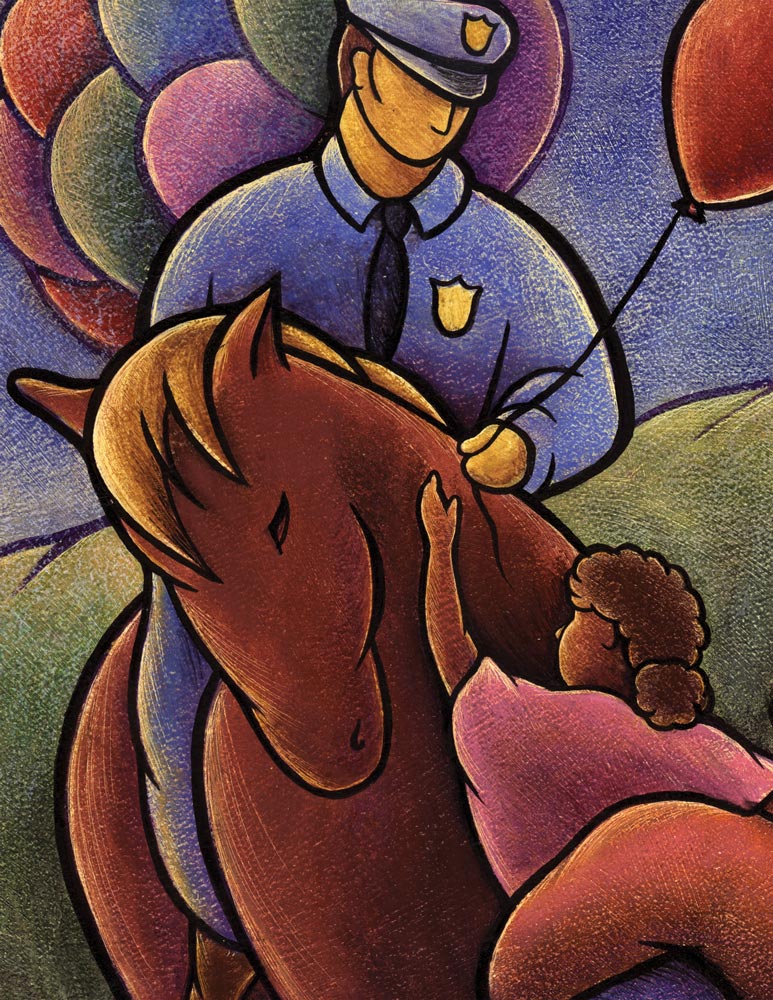The Case for Compassionate Policing
UVA law professor argues for greater understanding between police officers and citizens
I write this on New Year’s Eve, as I try to discover a silver lining to 2014’s darkest clouds. In Staten Island, Ferguson and Cleveland, men and boys were killed by those obligated, first and foremost, to protect and serve. In Brooklyn, police officers were assassinated for doing their jobs. There is nothing new to violence by and against the police. But there is something comparatively new to our candid, public conversation about these events. This dialogue may lead Americans to cultivate empathy and understanding; we may come to see an old thing in a new way.
Yes, we live in a society plagued still by structural inequality and implicit bias. And yes, police officers do difficult, dangerous and critically important work. But it’s off the mark even to talk of sides, as if effective policing and respect for civil rights were some zero-sum game. In fact, effective, respectful and safe policing are not mutually exclusive; they are reinforcing.

This is well known to departments that already emphasize community policing. Take the Charlottesville Police Foundation, which hosts “Teen Nights” to promote positive engagement between officers and community youth, and subsidizes housing for officers within city limits. These programs help officers and citizens see each other as neighbors, not as others. Neighbors may disagree, but they fight more like family members than adversaries.
It may be trite but certainly true that the touchstone is mutual respect. The situation in Ferguson was tragic enough; it was made worse when officers left Michael Brown’s body to decompose for hours in the hot sun—and worse still when mourners and protestors were met by riot squads.
In this way, disrespectful policing is not just wrong; it’s counterproductive. But the onus does not fall only on the police as a part of the community; it falls also on the community that is policed. Just as violence is not law enforcement, violence is also not political protest. Violence and disrespect undermine the rule of law and drown out both sides’ messages.
I worked for several years as a public defender in the South Bronx. The overwhelming majority of my clients were arrested for minor public-order offenses. But the stakes of petty-crime enforcement are high. And the balance to be struck is delicate. The quality of life on city streets depends on police taking disorder seriously. At the same time, when these interactions go wrong, they may go horribly wrong. Look no further than the death of Eric Garner, who died after his forceful arrest for selling loose cigarettes without a tax stamp.
Obviously, the Garner case is exceptional, but there’s always a risk that an effort to preserve order may devolve into chaos. The risk is exacerbated, not diminished, by the misguided policy—dominant in some police departments—that arrest ought to be the ordinary course, not the last resort. Consider the recent “virtual work stoppage” by some New York City police officers. The city’s largest police union has urged its members not to make arrests “unless absolutely necessary.” Quite by accident, the union may be pushing the optimal and just policy.
In a recent article in the Stanford Law Review, I criticized the Supreme Court for constitutionally tolerating a petty-crime arrest that even it had termed a “pointless indignity” and a “gratuitous humiliation.” The Supreme Court recognized sensible policing alternatives but ultimately refused to demand them. To my thinking, the Court was much too timid.
I recognize, however, that the most likely solutions are not going to come from courts, academies or legislatures. The solutions will grow out of a shift in the ways police officers see people and people see police officers. We are all human—police and civilians alike. Some of us are bad, most of us are good, and all of us are entitled to dignified treatment.